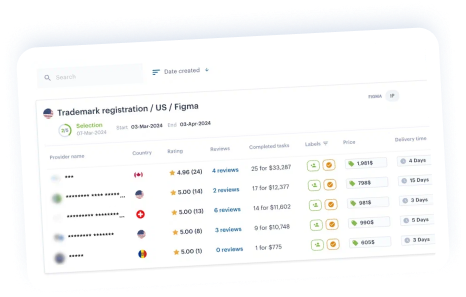South Korea is a vibrant country with a highly developed economy and a strong industrial base. It also has an innovative and entrepreneurial culture that has given rise to many successful start-ups and small businesses. With a population of over 50 million, South Korea offers a large and growing market for companies looking to expand their operations.
Patent registration is an important step for inventors and businesses who want to protect their intellectual property rights in Korea. This article provides an overview of the patent registration process in Korea, the conditions for patent protection, application procedures, and patent prosecution and issuance.
table of contents
1. What is an invention patent?
2. Patentable and non-patentable items in Korea
3. Documents required for patent registration in Korea
4. Patent Registration Procedures in Korea
5. Cost of Patent Registration in Korea
1. What is an invention patent?
An invention patent is a government-issued legal document that gives an inventor exclusive rights to exclude others from making, using, selling, or importing that invention for a limited time.
In exchange for this exclusivity, inventors are required to disclose details of their invention in their patent application, which becomes part of the public record. Patents are intended to spur innovation by providing a means for inventors to protect and profit from their ideas, while simultaneously disseminating knowledge and ideas to the public.
The inventor of an invention or his/her assignee may file a patent application for the invention with the Korean Intellectual Property Office (KIPO) . The applicant may be either an individual or a legal entity. The term of a patent begins when the establishment of the patent right is registered and ends 20 years after the filing date.
2. Patentable and non-patentable items in Korea
To obtain a patent in Korea, the following criteria must be met:
- It must be industrially applicable, i.e., usable in an industrial setting.
- The invention must be novel, that is, not known to the public prior to filing (existing technology, prior art).
- It must have an inventive step, i.e., it must not be easily inferred from the prior art.
Certain inventions are not patentable in South Korea. For example:
- Inventions that may be contrary to public order or morality. Public order refers to the general interest of society or the country, while morality includes the moral views generally accepted in society or a particular group of people.
- Inventions that may be harmful to public health.
3. Documents required for patent registration in Korea
The documents required to file a patent application in Korea are as follows:
- An application form indicating the names and addresses of the inventors and applicants, the title of the invention, and priority data (if priority is claimed).
- A specification including the title of the invention, a brief description of the drawings (if any), a detailed description of the invention and claims.
- Drawings (if available).
- Abstract.
- If priority is claimed, a certified copy of the priority application and its Korean translation are required. This priority document may be submitted within 16 months from the priority date.
- Power of attorney, if necessary.
The official language for patent registration is Korean. Applications can be filed in English, but a Korean translation must be submitted within 14 months from its first priority date.
In order to enjoy priority, the application must be filed in Korea within one year from the filing date of the priority request. The deadline for entering the PCT national phase is 31 months from the priority date. These time limits cannot be extended.
4. Patent Registration Procedures in Korea
The patent registration process in Korea involves several steps: search, application, examination, opposition and grant.
Before filing a patent application in Korea, it is important to conduct a thorough search of the prior art to ensure that the invention meets the novelty and inventive step criteria. This can be done by conducting a search of relevant databases or by hiring a professional patent attorney .
Once the prior art search is complete, the next step is to file a patent application with the Korean Intellectual Property Office (KIPO) , which must include a detailed description of the invention, claims and any necessary drawings.
After an application is filed, KIPO will conduct an examination to determine whether the invention meets the requirements for patentability, which may include reviewing the prior art, searching for similar inventions, and evaluating the inventive steps of the invention.
Once an application is approved by KIPO, it will be published in the Official Gazette. A patent application will only be subject to examination if an examination is requested by the applicant or an interested party within three years from the filing date.
Within two months after publication, anyone may file an opposition on the grounds of lack of novelty or inventive step, or unpatentable. If an opposition is filed, KIPO will notify the patent owner and give him an opportunity to file a counterargument. If a counterargument is filed, KIPO may conduct further examination or request additional information or evidence from both parties. Also, check out our guide to the patent registration process to protect your IP rights.
If there is no opposition or if the opposition is unsuccessful, KIPO will grant the patent. When the patent applicant receives a notice of the decision to grant the patent, he or she must pay the first three years’ annuities as registration fees within three months. Once a patent is granted, the owner has the exclusive right to make, use, sell and import the invention in Korea for a period of 20 years from the filing date.
The patent registration process in Korea typically takes 2-3 years and can be very complicated and time-consuming, so it is highly recommended that you seek the guidance of a qualified patent attorney to ensure that the process goes smoothly and that the resulting patent is enforceable.
5. Cost of Patent Registration in Korea
| application | Basic fee |
| Standard (electronic) | 46,000 KRW |
| Period extension | 300,000 KRW |
| examination | |
| Priority Request | 18,000 KRW |
|
18,000 KRW |
| Request for substantive review | 143,000 KRW |
|
44,000 KRW |
| Annual fee | |
| 1 to 3 years (including grant fee) | 15,000 KRW |
|
13,000 KRW |
| 4 to 6 years | 40,000 KRW |
|
22,000 KRW |
| 7 to 9 years | 100,000 KRW |
|
38,000 KRW |
| 10-12 years | 240,000 KRW |
|
55,000 KRW |
| 13-15 years | 360,000 KRW |
|
55,000 KRW |
| 16 to 25 years | 360,000 KRW |
|
55,000 KRW |
The cost of patent registration in Korea through the iPNOTE platform starts from as low as $830 including all government fees and document preparation. Find the best patent agent in Korea on iPNOTE.
6. Conclusion
Obtaining an invention patent in Korea may be a complicated process, but it is necessary to protect your invention and business interests. With the help of an experienced patent attorney, you can increase your chances of obtaining a patent and protecting your intellectual property in Korea by staying up to date on the latest laws and regulations.
***
The iPNOTE platform has information on over 700 IP law firms covering 150 countries and a flexible filtering system ensures that you can always find the right direct service provider.
View our directory of patent attorneys in Korea .
Sign up for free and get started solving all your IP-related problems.






